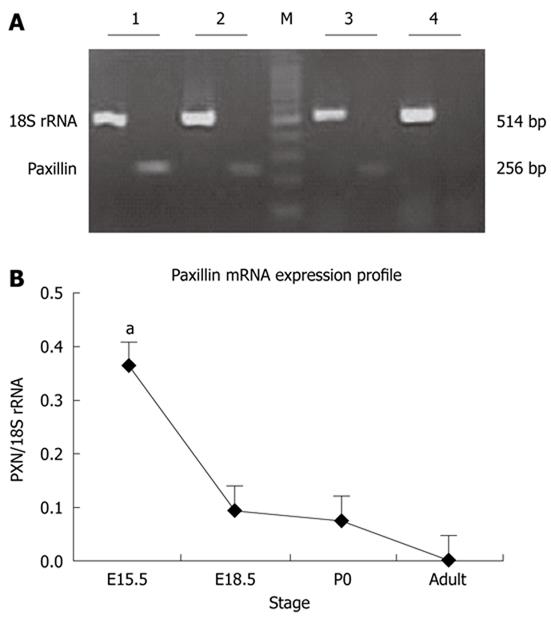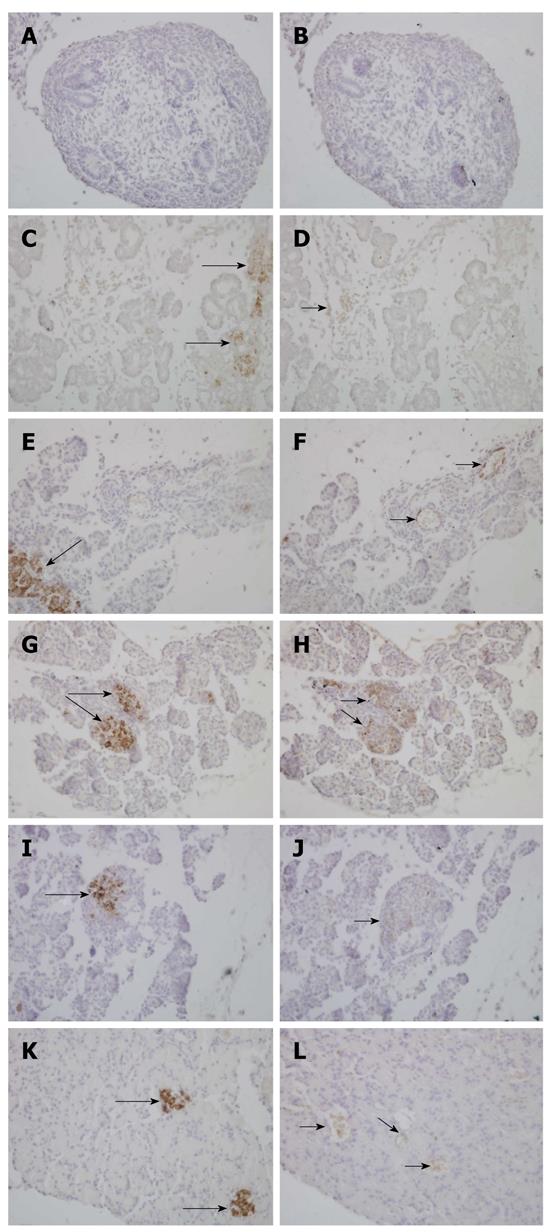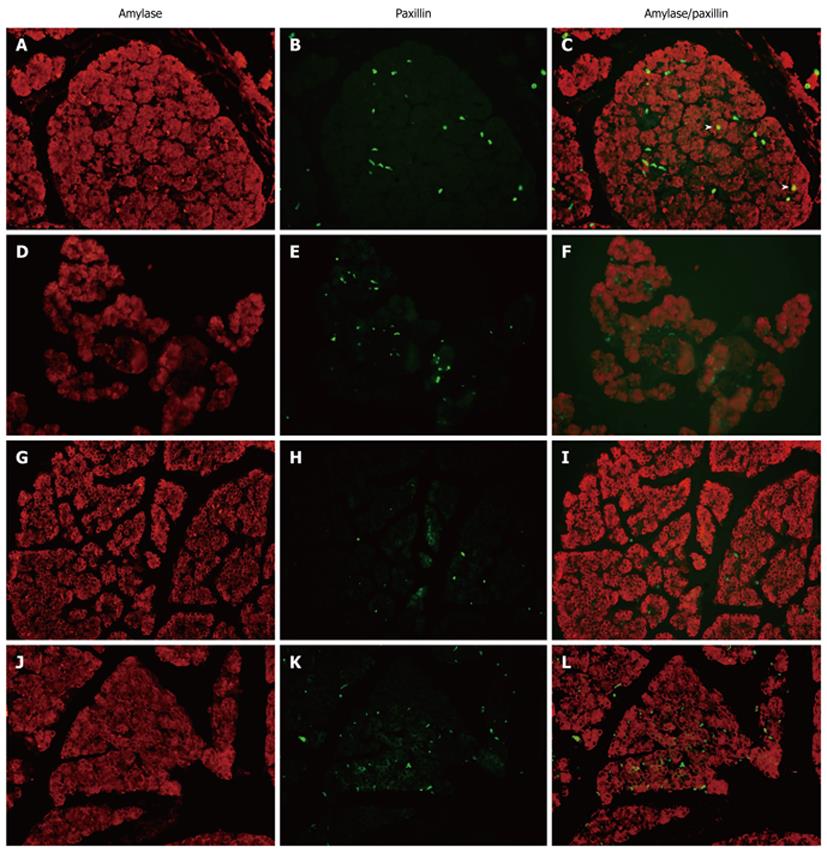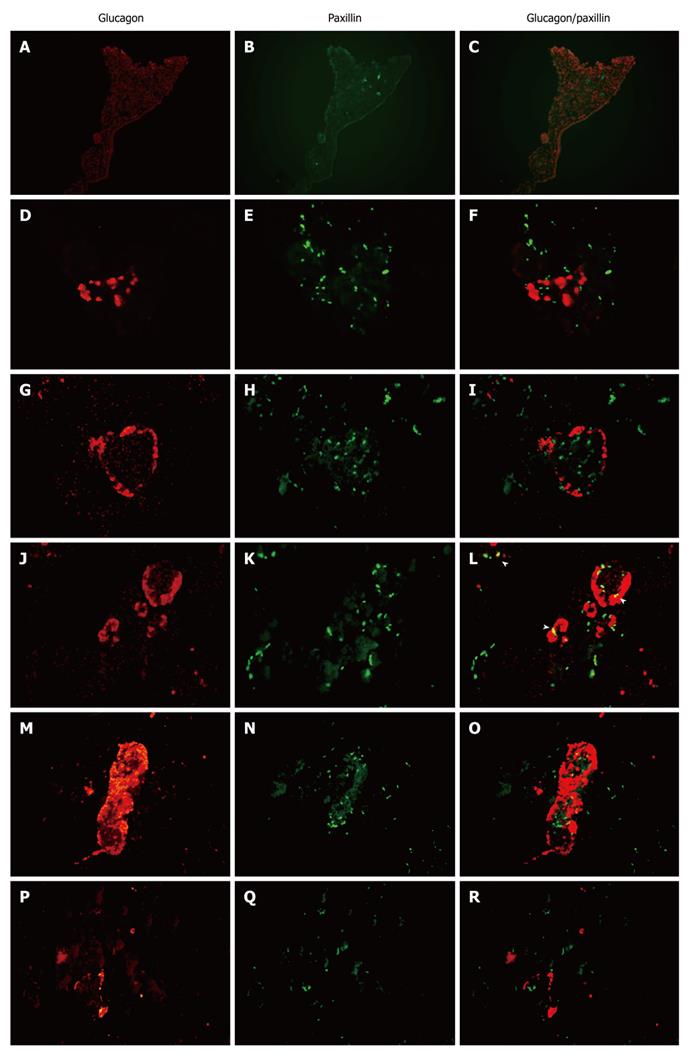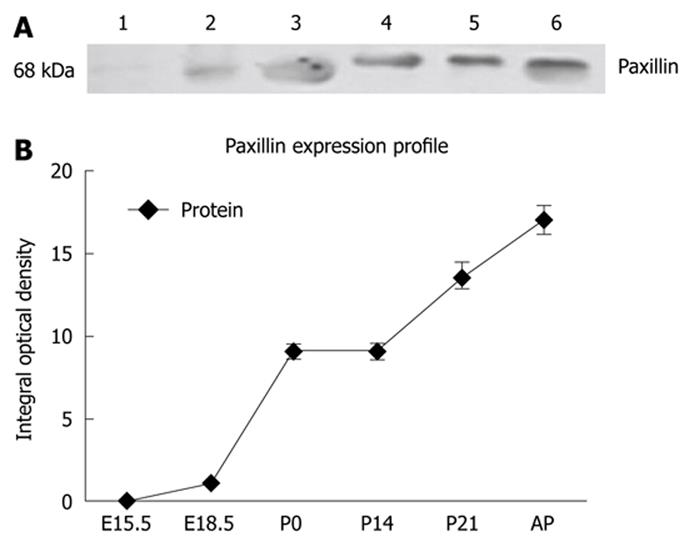Copyright
©2011 Baishideng Publishing Group Co.
World J Gastroenterol. Oct 28, 2011; 17(40): 4479-4487
Published online Oct 28, 2011. doi: 10.3748/wjg.v17.i40.4479
Published online Oct 28, 2011. doi: 10.3748/wjg.v17.i40.4479
Figure 1 Paxillin mRNA expression level in the developing rat pancreas measured by reverse transcriptional polymerase chain reaction.
A: From embryonic day (E) 15.5 to adulthood, paxillin mRNA expression in pancreas was highest at E15.5, following a dramatic decrease. Paxillin mRNA was almost undetectable in the adult pancreas. 1: E15.5; 2: E18.5; 3: P0; 4: Adult; M: Marker; B: Paxillin mRNA expression was analyzed and normalized to 18S rRNA. Results are indicated in percentages above the 18S rRNA value and are representative of three independent experiments. Compared to E15.5, the level of paxillin mRNA was lower at E18.5, P0 and adult (aP < 0.05 vs E18.5, P0 and adult, respectively).
Figure 2 Immunohistochemical analysis of insulin and paxillin in the serial sections of the rat pancreas at E15.
5 (A, B), E18.5 (C, D), P0 (E, F), P14 (G, H), P21 (I, J) and adult (K, L). Adjacent pancreatic sections from six developmental stages were stained with antibodies against insulin (left lane) and paxillin (right lane), respectively. We acquired images using an OLYMPUS DP70 digital camera. Strong cytoplasmic staining was observed for insulin (long arrows) for five stages except E15.5. Immunolocalization for the paxillin revealed a sporadic positive staining (short arrows) in the pancreas. In E18.5 and P0 rats, some cells in the pancreas, but not in islets, were stained. As shown in G-J, at P14 and P21 paxillin was mainly localized in islets. All magnifications are × 400.
Figure 3 Immunofluorescent localization of paxillin and amylase in the pancreas of P0, P7, P21 and adult rats.
The paxillin antibody was detected with an fluorescein isothiocyanate (green)-labeled secondary antibody and the amylase antibody was detected with a Cy3 (red)-labeled secondary antibody. Overlap between paxillin (green) and amylase (red) labeling is indicated by arrowheads. Original magnification 400 ×. A-C: P0; D-F: P7; G-I: P21; J-L: Adult.
Figure 4 Immunofluorescent localization of paxillin and glucagon in the pancreas of E15.
5, E18.5, P0, P7, P21 and adult rats. The paxillin antibody was detected with an fluorescein isothiocyanate (green)-labeled secondary antibody and the glucagon antibody was detected with a Cy3 (red)-labeled secondary antibody. Overlap between paxillin (green) and glucagon (red) labeling is indicated by arrowheads. Original magnification 400 ×. A-C: E15.5; D-F: E18.5; G-I: P0; J-L: P7; M-O: P21; P-R: Adult.
Figure 5 Paxillin protein expression level in the developing rat pancreas measured by Western blotting.
A: From E15.5 to adulthood, paxillin protein (68 KD) expression in pancreas was highest at adult. 1: E15.5; 2: E18.5; 3: P0; 4: P14; 5: P21; 6: Adult; B: Progressively increased level of paxillin protein through the transition from E15.5 to adult is observed. Results are representative of three independent experiments.
- Citation: Guo J, Liu LJ, Yuan L, Wang N, De W. Expression and localization of paxillin in rat pancreas during development. World J Gastroenterol 2011; 17(40): 4479-4487
- URL: https://www.wjgnet.com/1007-9327/full/v17/i40/4479.htm
- DOI: https://dx.doi.org/10.3748/wjg.v17.i40.4479









